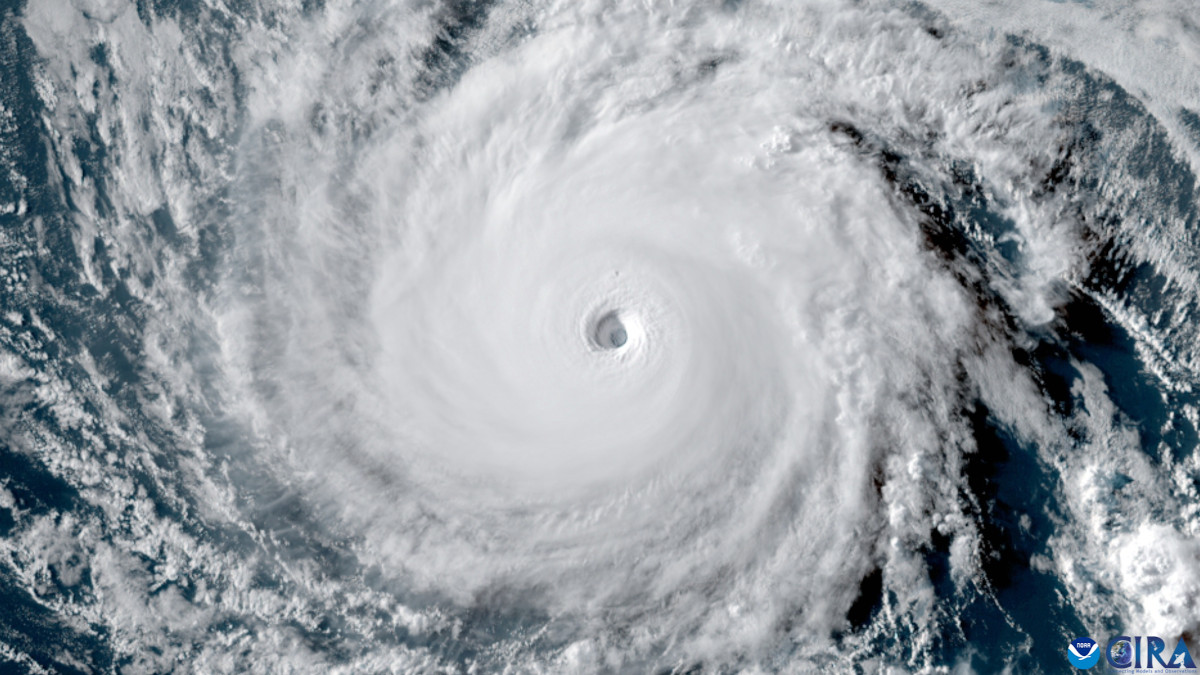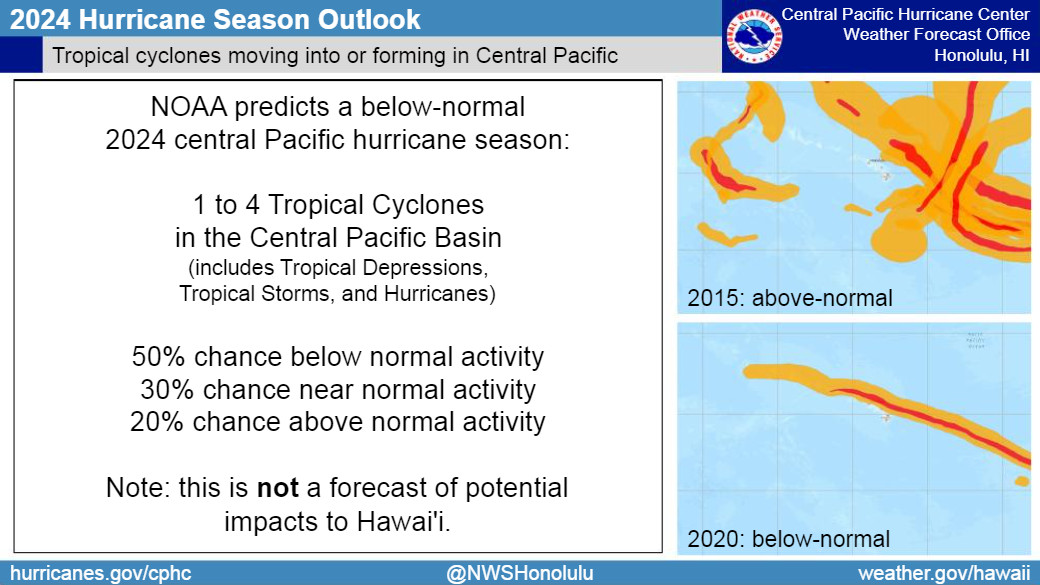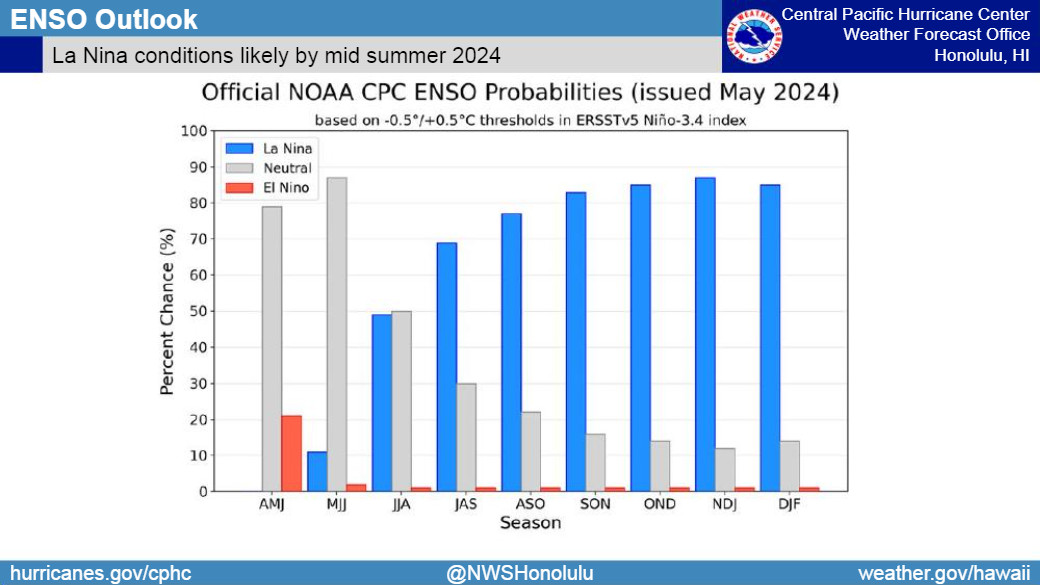(BIVN) – Forecasters are predicting a below-normal 2024 central Pacific hurricane season, as the La Niña weather pattern is expected to arrive this summer.
A near-normal season for the central Pacific Hurricane region be 4 or 5 tropical cyclones. Meteorologists say this year we are more liekly to see 1–4 tropical cyclones.
Tropical cyclones include tropical depressions, tropical storms and hurricanes.
NOAA’s Central Pacific Hurricane Center and Climate Prediction Center shared the hurricane season outlook with the public on Tuesday. According to a NOAA press release:
Overall, there is a 50% chance of below-normal tropical cyclone activity. The outlook also indicates a 30% chance of a near-normal season and 20% for an above-normal hurricane season across the central Pacific hurricane region. The central Pacific hurricane region is located north of the equator between 140°W and the International Date Line.
“Hurricane season in the central Pacific region is likely to be below average this year,” said Matthew Rosencrans, lead seasonal hurricane forecaster at NOAA’s Climate Prediction Center, a division of NOAA’s National Weather Service (NWS). “A key factor influencing our forecast is the predicted arrival of La Nina this summer, which typically contributes to less tropical cyclone activity across the central Pacific Ocean basin.”
As one of the strongest observed El Ninos nears its end, NOAA scientists predict a quick transition to La Nina conditions. La Nina typically increases wind shear in the central Pacific region, making it harder for storms to develop. Forecasters look at a combination of atmospheric and oceanic conditions, climate patterns and climate models to develop the outlook.
The hurricane season outlook is a general guide to the overall seasonal tropical cyclone activity in the central Pacific basin and does not predict whether or how many of these systems will affect Hawaii. The central Pacific hurricane season begins June 1 and runs through November 30.
“As we look towards our coming hurricane season, we must prepare with the real possibility in mind that a hurricane could impact our community,” said Chris Brenchley, director of NOAA’s Central Pacific Hurricane Center. “Any actions we take now, however small, can make a difference in how resilient our households and communities will be in the event of a storm.”
Forecasters at the Central Pacific Hurricane Center continuously monitor weather conditions using satellites, land-and ocean-based sensors and aircraft reconnaissance missions operated by NOAA and our partners. These observations are fed into complex computer models that run on NOAA supercomputers. Forecasters use that information to develop storm track and intensity forecasts, and provide critical decision support services to emergency managers at the federal, state and county levels.
Ahead of the hurricane season, NOAA says it has made some important improvements to forecasts and communications. From NOAA:
- The Central Pacific Hurricane Center and National Hurricane Center will begin using an experimental version of the cone graphic that includes inland tropical storm and hurricane watches and warnings. The inclusion of these watches and warnings will help communicate the inland wind risk based on recommendations from social science research.
- This season, NWS will upgrade the Hurricane Analysis and Forecast System, which will provide improved forecast skills than the previous version.
- The Central Pacific Hurricane Center and the National Hurricane Center will begin forecasting the size of the tropical storm wind field through the five day tropical cyclone forecast. Previously, forecasts of the wind field size were only provided for the first three days.
- NOAA’s Climate Prediction Center now includes Hawaii on the operational 6-10 Day and 8-14 Day Temperature and Precipitation Outlook maps, as well as experimental 6-10 Day and 8-14 Day Temperature and Precipitation outlooks with more details for Hawaii.




by Big Island Video News6:40 pm
on at
STORY SUMMARY
HONOLULU - The NOAA Central Pacific Hurricane Center shared its 2024 central Pacific hurricane season outlook with the public on Tuesday.